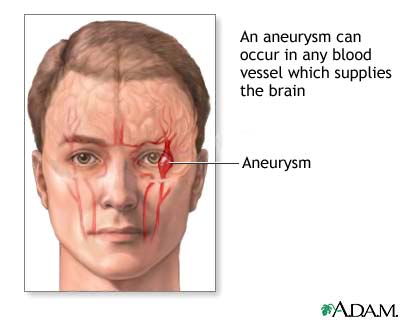
Overview
Weakness, numbness, or other loss of nerve function may indicate that an aneurysm may be causing pressure on adjacent brain tissue. Symptoms such as a severe headache, nausea, vomiting, vision changes or other neurological changes can indicate the aneurysm has ruptured and is bleeding into the brain. A ruptured intracranial aneurysm causes intracranial bleeding and is considered very dangerous.
Review Date 4/16/2025
Updated by: Joseph V. Campellone, MD, Department of Neurology, Cooper Medical School at Rowan University, Camden, NJ. Review provided by VeriMed Healthcare Network. Also reviewed by David C. Dugdale, MD, Medical Director, Brenda Conaway, Editorial Director, and the A.D.A.M. Editorial team.


